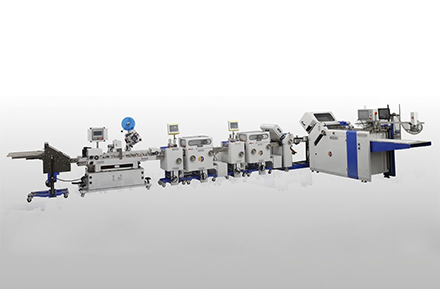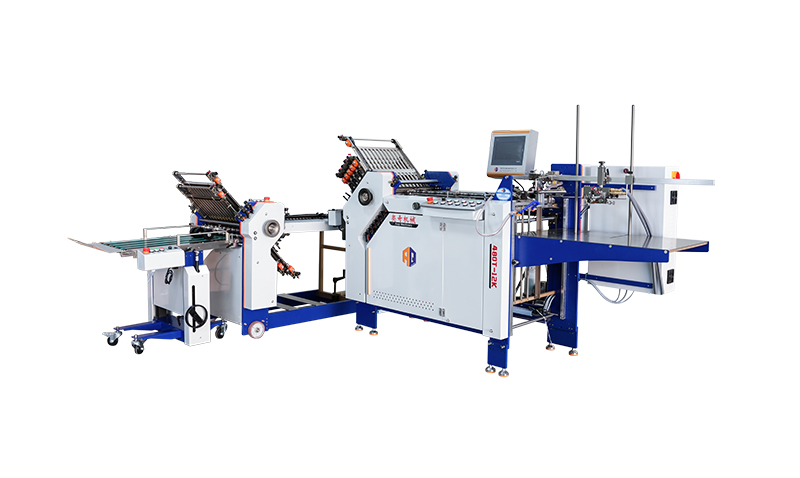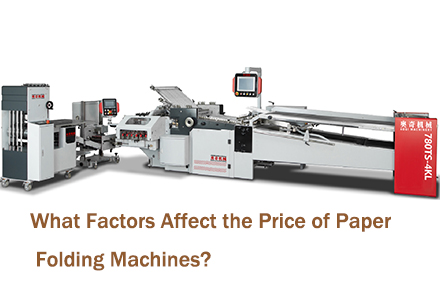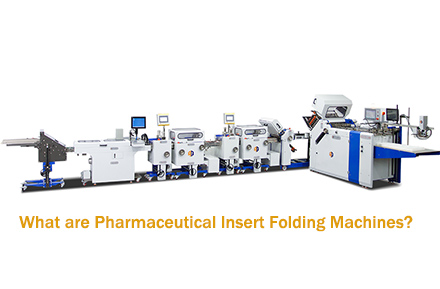In the pharmaceutical industry, precision, reliability, and compliance with strict standards are paramount when it comes to packaging and labeling. Paper folding machines play a crucial role in producing accurate and neatly folded inserts, leaflets, and outserts that accompany pharmaceutical products. These machines must handle delicate materials, ensure consistent folding, and integrate seamlessly with other packaging processes. Here are three key types of paper folding machines widely used in the pharmaceutical sector:
1. Pharmaceutical Insert Folding Machines
Pharmaceutical Insert Folding Machines, such as the 480TS and 600TS models, are specifically designed to meet the unique needs of folding lightweight pharmaceutical leaflets and miniature inserts. These machines excel in handling the thin, often heat-sensitive paper used for drug medication inserts, ensuring that each fold is precise and compliant with regulatory requirements.

Key Features and Capabilities:
- Versatile Folding Configurations: The first station of 480TS/600TS machines supports different width formats with 4-20 plates, while the second station handles thick or small-size leaflets with 4/6/8 buckle plates. This flexibility allows for various folding patterns, from simple z-folds to complex multi-panel designs.
- High-Speed Performance: With a maximum folding speed of 220 meters per minute, these machines balance efficiency with accuracy, making them suitable for high-volume production.
- Advanced Automation:
- Automatic feeder with belt driving for low-noise operation.
- Online paper ejection without stopping the machine, enhancing productivity.
- Quality control systems like CCD camera inspection, automatic deviation correction, and ultrasonic double-sheet detection to prevent errors.
- Precision Specifications:
Max. Infeed Paper Size: 480×1000mm (480TS) / 600×1000mm (600TS)
Mini. Infeed Paper Size: 100×130mm
Mini. Folded Product Size: 30×30mm
Applications:
Ideal for folding patient information leaflets, drug inserts, and outserts that require detailed instructions, dosage information, and safety warnings. Their precision ensures that critical information is easily readable and properly formatted, adhering to pharmaceutical packaging standards.
2. Combi Paper Folding Machines
Combi Paper Folding Machines, such as the 780TS Combination Folding Machine, are designed for flexibility and adaptability, making them suitable for pharmaceutical applications that require diverse folding techniques. These "combination" machines integrate multiple folding mechanisms into a single system, enabling complex folding patterns in a single pass.

Key Features and Capabilities:
- Multi-Functionality: Combines different folding methods (e.g., cross-folding, parallel folding, buckle folding) to handle intricate layouts, such as multi-page inserts or leaflets with varying panel sizes.
- Robust Design: Built to process a wide range of paper weights and sizes, from thin pharmaceutical paper to slightly thicker materials for packaging inserts.
- High Efficiency: Despite their versatility, combi machines maintain high folding speeds, ensuring productivity for batches of varying complexity.
- Easy Adjustment: Quick-changeover mechanisms allow operators to switch between different folding configurations without extensive downtime, making them suitable for small to medium production runs with frequent product changes.
- Precision Specifications:
Max. Infeed paper size: 780*1200mm
Mini. Infeed paper size: 150*180mm
Max. folding speed: 220m/min
Applications:
Useful for pharmaceutical companies that need to fold inserts with complex structures, such as tri-fold leaflets, multi-language inserts, or materials that require both horizontal and vertical folds. These machines are also valuable for integrating with other packaging lines.
3. Automatic Paper Folding Machines
Automatic Paper Folding Machines form the backbone of many pharmaceutical packaging lines, leveraging technology to minimize manual intervention and maximize accuracy. Models like the 360T/480T Paper Folding Machines this category, prioritizing speed, reliability, and user-friendly operation.

Key Features and Capabilities:
- Fully Automated Operation:
- Self-teaching jam detection systems that identify and alert operators to issues, reducing downtime.
- Touch screen interfaces for intuitive programming and control, allowing quick setup of folding parameters.
- Quality Assurance:
- Integrated inspection systems (e.g., camera-based monitoring) to verify fold accuracy and detect defects in real-time.
- Ultrasonic sensors to prevent double-sheet feeding, a critical feature for maintaining insert integrity.
- Energy Efficiency and Noise Reduction: Modern designs, such as belt-driven mechanisms, prioritize quiet operation and minimal energy consumption, aligning with industrial sustainability goals.
- Precision Specifications:
Max. infeed paper size: 360*1000mm / 480*1000mm
Mini. infeed paper size:50*100mm
Paper weight : 30-250g
Applications:
Suitable for high-volume production of standard pharmaceutical inserts, where consistency and speed are essential. These machines are often integrated into fully automated packaging lines, working in tandem with labeling, gluing, and stacking systems to create a seamless workflow from paper input to finished insert.
Choosing the Right Machine for Pharmaceutical Needs
When selecting a paper folding machine for pharmaceutical use, key considerations include:
Material Type: Lightweight vs. thick paper, and sensitivity to heat or friction.
Folding Complexity: Simple folds vs. multi-panel designs requiring precise alignment.
Production Volume: High-speed machines for large batches or versatile combi systems for varied runs.
Regulatory Compliance: Features like CE certification and traceable quality control systems.
Integration Capability: Compatibility with additional devices (e.g., gluing, labeling) to streamline packaging processes.
Conclusion
Pharmaceutical insert folding machines, combi systems, and automatic folding machines each address specific needs in the industry, ensuring that patient information is accurately presented, regulatory requirements are met, and production efficiency is optimized. With advancements in automation and precision engineering, these machines continue to play a vital role in maintaining the quality and safety of pharmaceutical packaging.




